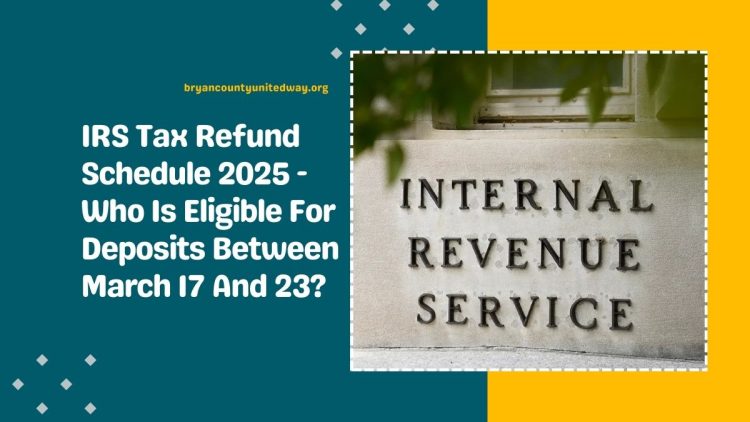As the 2025 tax season progresses, taxpayers are keen to know when they can expect their refunds, especially those anticipating deposits between March 17 and 23, 2025.
Understanding the IRS refund schedule and the factors influencing refund timelines can help set realistic expectations.
IRS Refund Processing Timeline
The IRS typically processes refunds within 10 to 21 days for electronically filed returns with direct deposit. Paper returns or those opting for mailed checks may experience longer processing times.
For the 2025 tax season, which commenced on January 27, 2025, the IRS has been issuing refunds promptly, with many taxpayers already receiving their refunds.
Factors Influencing Refund Timing
Several elements can affect the timing of your tax refund:
- Filing Method: E-filing with direct deposit is the fastest way to receive a refund, typically within 21 days. Paper filings and mailed checks can extend this period.
- Tax Credits: Returns claiming the Earned Income Tax Credit (EITC) or Additional Child Tax Credit (ACTC) may experience delays. By law, the IRS cannot issue refunds for these credits before mid-February. For the 2025 tax season, most EITC/ACTC refunds were expected to be available in bank accounts by March 3.
- Return Accuracy: Errors or incomplete information can lead to processing delays.
Estimated Refund Dates for March 17 – 23, 2025
Based on typical IRS processing times, taxpayers who filed their returns electronically and opted for direct deposit can anticipate refunds as follows:
| Filing Date | Estimated Refund Date |
|---|---|
| February 24, 2025 | March 17, 2025 |
| February 25, 2025 | March 18, 2025 |
| February 26, 2025 | March 19, 2025 |
| February 27, 2025 | March 20, 2025 |
| February 28, 2025 | March 21, 2025 |
| March 1, 2025 | March 22, 2025 |
| March 2, 2025 | March 23, 2025 |
How to Track Your Refund
Taxpayers can monitor their refund status using the IRS’s “Where’s My Refund?” tool or the IRS2Go mobile app. These platforms provide real-time updates and are typically updated once daily, usually overnight.
Common Reasons for Refund Delays
Refunds may be delayed due to:
- Errors on the Tax Return: Mistakes or incomplete information can slow processing.
- Incomplete Documentation: Missing forms or schedules may require additional IRS review.
- Outstanding Debts: Unpaid federal or state debts can result in refund offsets.
Tips to Expedite Your Refund
To ensure a swift refund process:
- E-File with Direct Deposit: This combination is the quickest method for receiving refunds.
- Double-Check Your Return: Ensure all information is accurate and complete before submission.
- Submit Early: Filing earlier in the season can lead to faster processing times.
Understanding the IRS refund schedule and the factors that influence processing times can help taxpayers set realistic expectations.
By filing electronically, opting for direct deposit, and ensuring the accuracy of their returns, taxpayers can expedite the refund process. For the most current information, regularly check the IRS’s “Where’s My Refund?” tool or the IRS2Go app.
FAQs
How can I check the status of my tax refund?
You can use the IRS’s “Where’s My Refund?” tool or the IRS2Go mobile app to monitor your refund status.
Why is my refund delayed beyond the estimated date?
Delays can occur due to errors on your tax return, incomplete documentation, or outstanding debts that offset your refund.
Does claiming tax credits affect my refund timing?
Yes, claiming credits like the EITC or ACTC can delay your refund, as the IRS is required to hold these refunds until mid-February.




